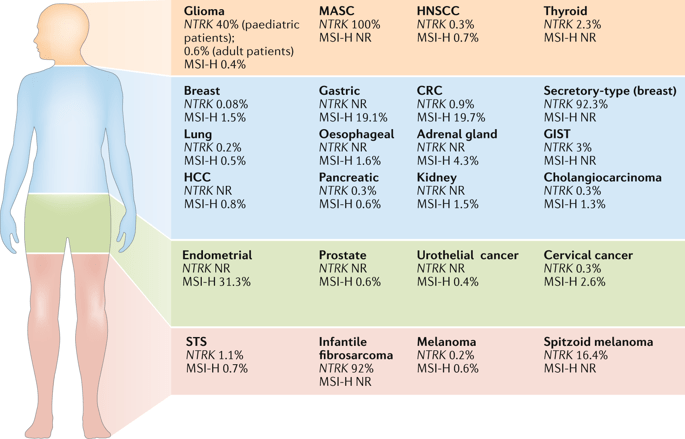Histology-agnostic drug development – considering issues beyond the tissue

Abstract
With advances in tumour biology and immunology that continue to refine our understanding of cancer, therapies are now being developed to treat cancers on the basis of specific molecular alterations and markers of immune phenotypes that transcend specific tumour histologies. With the landmark approvals of pembrolizumab for the treatment of patients whose tumours have high microsatellite instability and larotrectinib and entrectinib for those harbouring NTRK fusions, a regulatory pathway has been created to facilitate the approval of histology-agnostic indications. Negative results presented in the past few years, however, highlight the intrinsic complexities faced by drug developers pursuing histology-agnostic therapeutic agents. When patient selection and statistical analysis involve multiple potentially heterogeneous histologies, guidance is needed to navigate the challenges posed by trial design. Additionally, as new therapeutic agents are tested and post-approval data become available, the regulatory framework for acting on these data requires further optimization. In this Review, we summarize the development and testing of approved histology-agnostic therapeutic agents and present data on other agents currently under development. Finally, we discuss the challenges intrinsic to histology-agnostic drug development in oncology, including biological, regulatory, design and statistical considerations.
Key points
- The first therapeutic agent granted histology-agnostic approval in oncology was pembrolizumab for patients with microsatellite instability-high tumours.
- Larotrectinib and entrectinib were subsequently approved for the treatment of adult and paediatric patients with NTRK fusion-positive tumours.
- Future approvals should mirror the tumour landscape and the efficacy results of the approvals to date, in trials designed with patient selection criteria and statistical analyses suitable for the analysis of multiple heterogeneous histologies.
- Examples of heterogeneous activity of biomarker-driven drugs, dependent on the tumour tissue of origin, highlight the fact that histology-agnostic development will not be a feasible approach for all future oncology drugs.
- Future efforts in histology-agnostic drug development should ensure that patients receive therapeutic agents targeting a true driver mutation and take into account coexisting mutations in known resistance pathways; potential targets include RET, KRAS G12C and NRG1.
Read te full article: https://www.nature.com/articles/s41571-020-0384-0.pdf?origin=ppub

